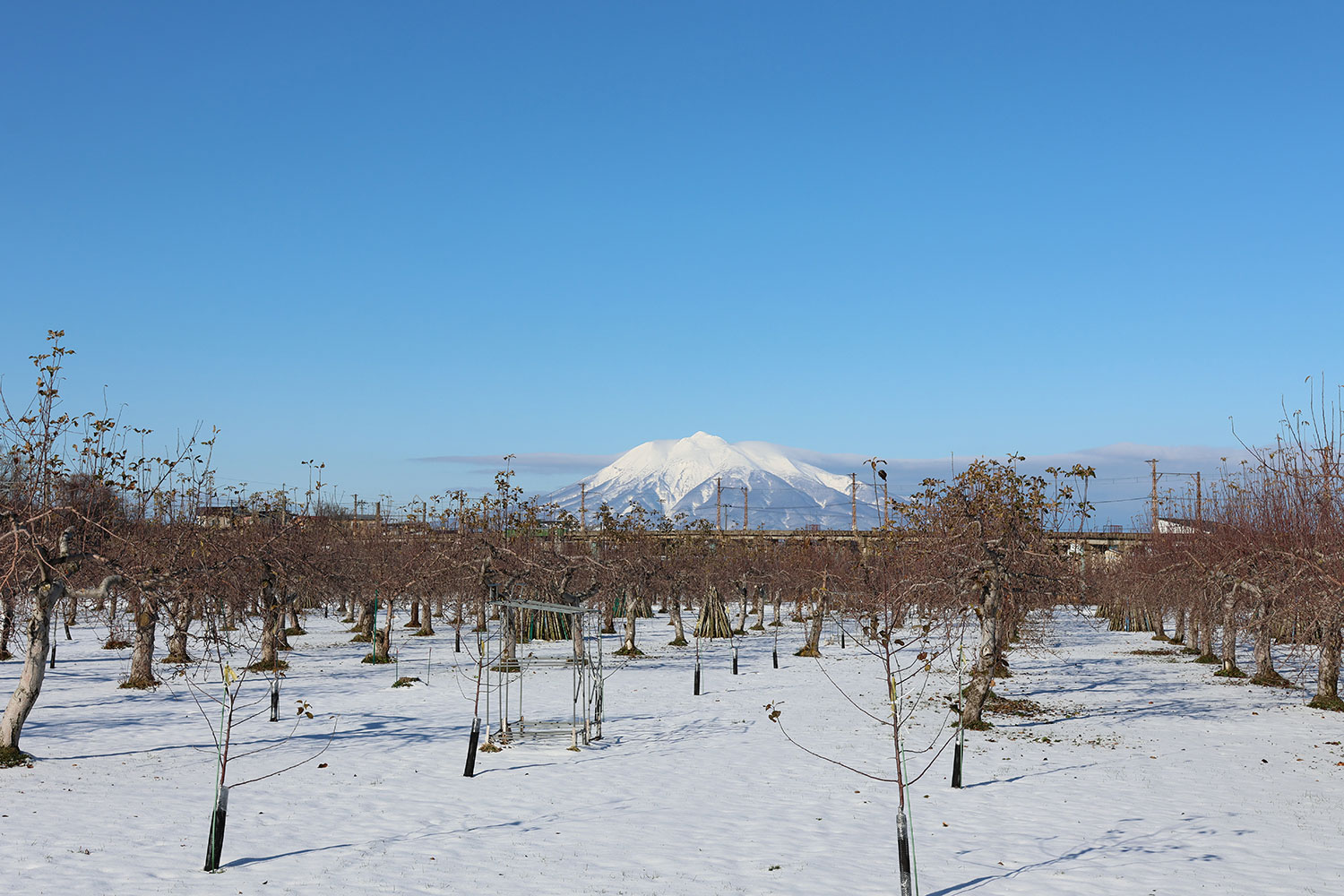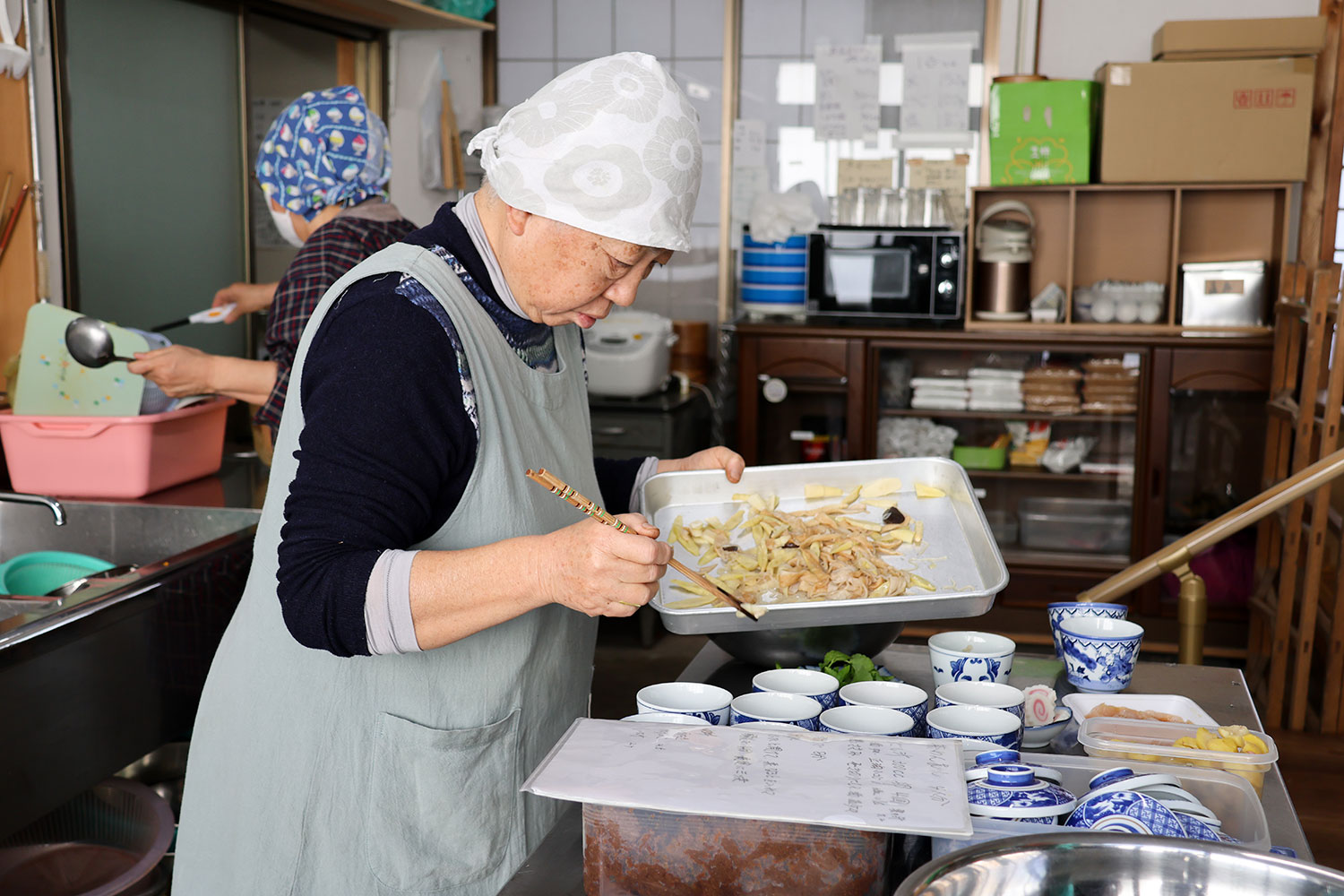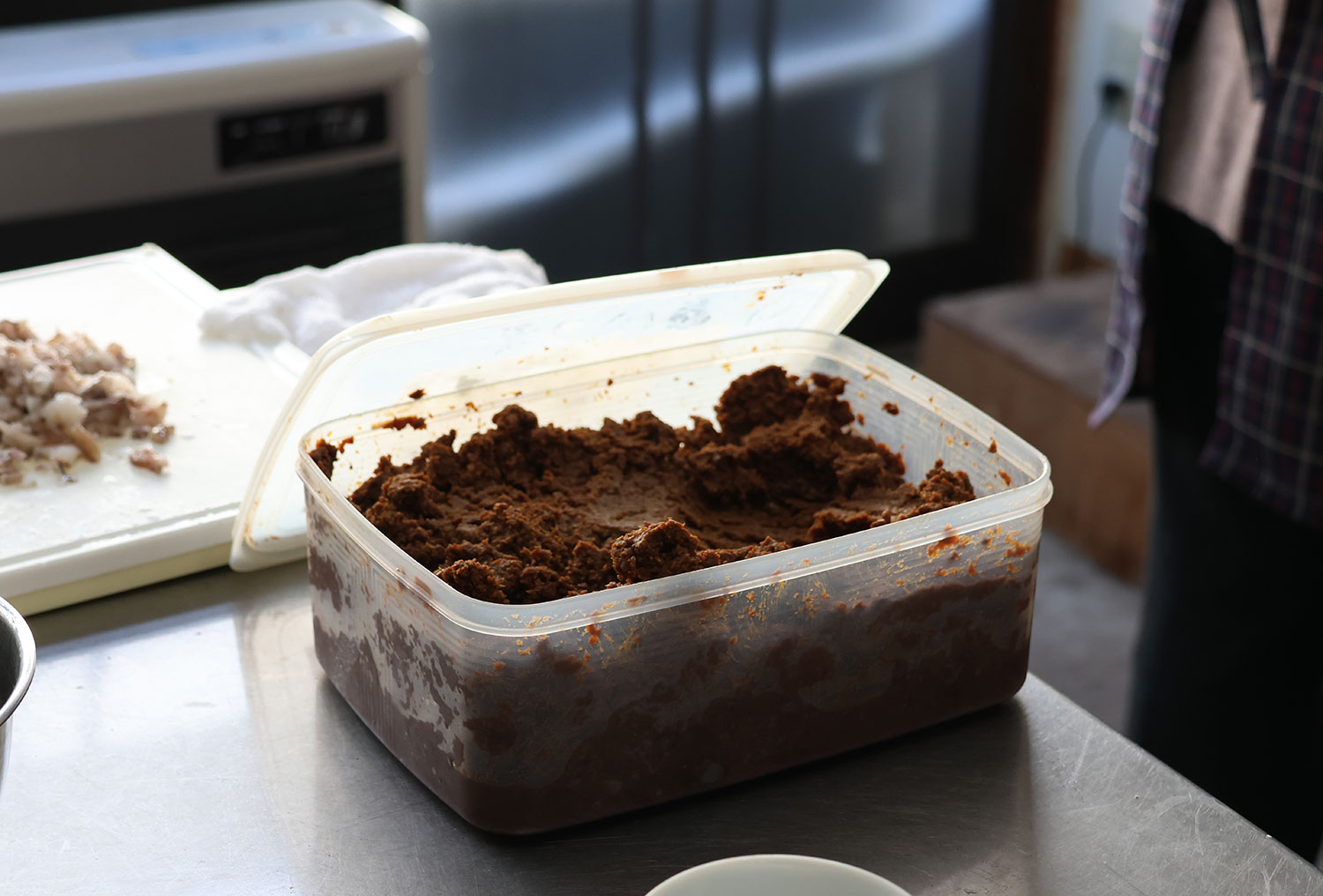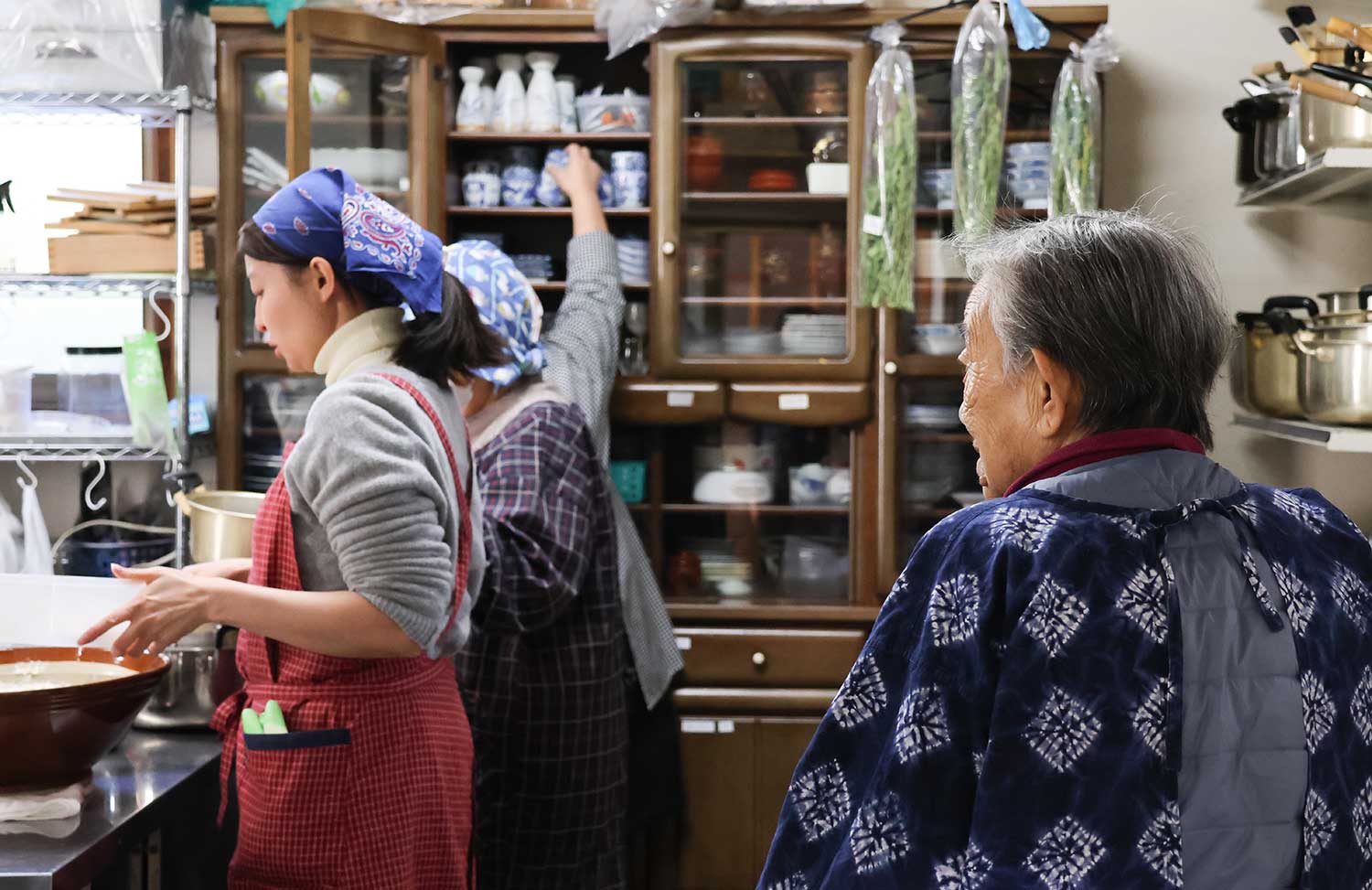
Forest

Ecosystem

Community
Creating, Recording, and Passing Down Regional Traditional Food Culture to the Next Generation
Tsugaru Akatsuki Association: Conveying the wisdom of fermentation, umami, and plant-based cuisine, as well as food preservation, in the snow country of the Tsugaru region of Japan
Tsugaru Akatsuki Association
(Aomori Prefecture)
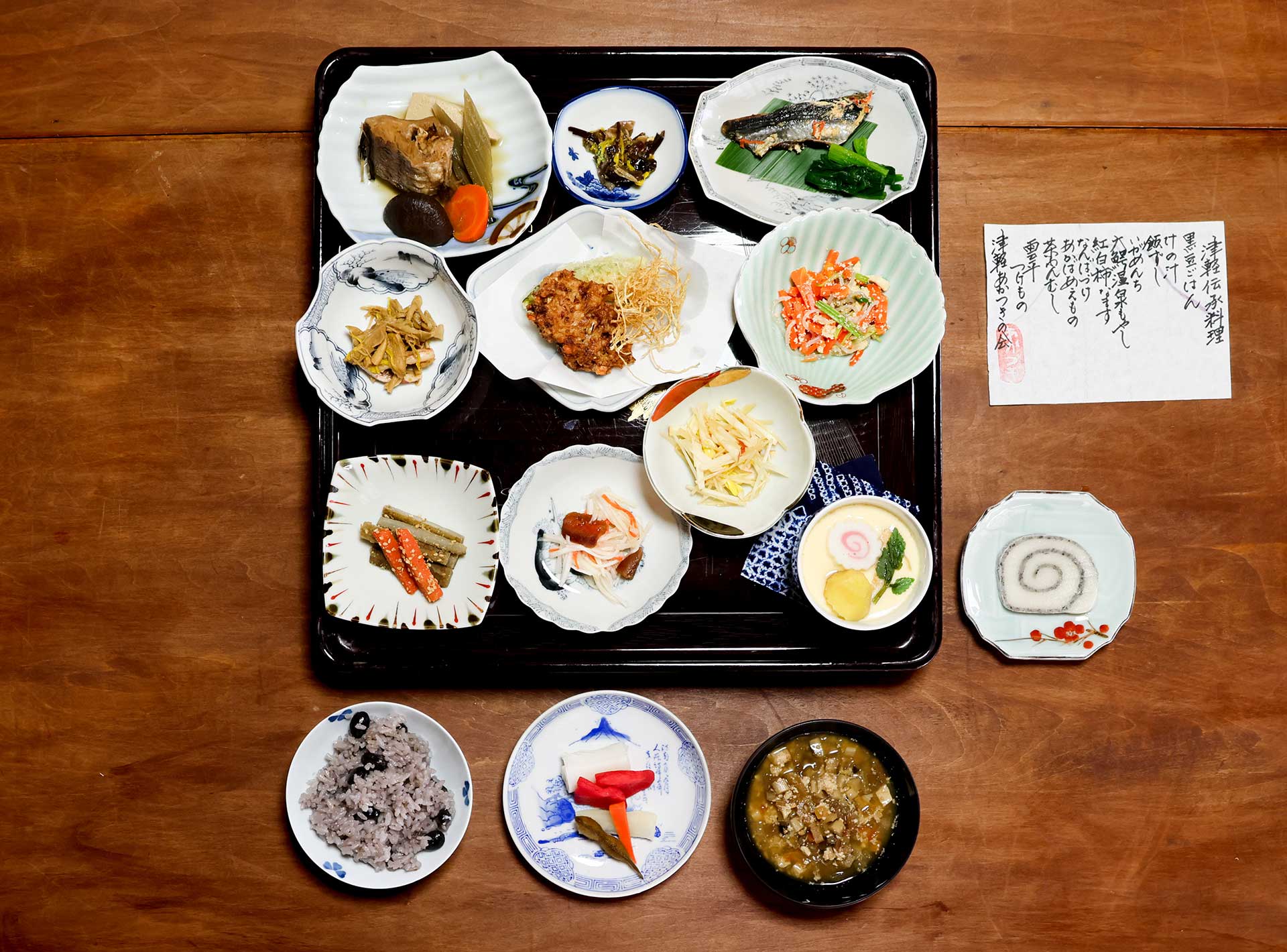
Overview
Located at the northernmost tip of mainland Japan, Hirosaki City in Aomori Prefecture’s Tsugaru region experiences warm summers while being enveloped in deep snow during winter. Historically, the area’s ancestors developed a food culture and food preservation skills to help survive such harsh winters, and now, some of the area’s women are actively involved in connecting with that culture and skillset, as has been passed down in farmer households, and transmitting that to present and future generations. These women are members of a cooking research unit called “Tsugaru Akatsuki Association.”
Tsugaru Akatsuki Association was established in 2001. But before that, for several years starting from the late 1990s, Chairperson Ms. Ryoko KUDO and others often visited elderly farmers in the Ishikawa area of Hirosaki City, researching and recording the local cuisine that had been created and passed down for generations in the region. In doing this, they collected over 200 recipes. During a time when refrigeration technology and distribution were not as developed as they are now in Japan, the cuisine in this area utilized ingredients from root to leaf without waste, incorporating food preservation techniques such as salting, drying, and fermentation. The dishes were primarily plant-based, making use of the umami created from dried small sardines and kelp stock, and they rarely used oil or sugar.
To pass on and preserve local cuisine for the future, Tsugaru Akatsuki Association holds reservation-only lunch events several days a week. Visitors from both within and outside the prefecture, as well as from overseas, come seeking the taste of these dishes, and the number of visitors has been increasing every year. Additionally, chefs visit to learn about Tsugaru traditional cuisine, which encompasses key phrases/words such as “local production for local consumption,” “fermentation,” “umami,” and “plant-based foods,” reflecting the contemporary world of food.
Successful outcomes
- Revived Tsugaru's local cuisine and food culture, which were on the brink of extinction
- Increased membership from a few members at its inception to 39 members ranging from their 30s to 80s as of January 2024
- Published the book "Tsugaru Tradition Cuisine" by the food specialist publisher Shibata Shoten in 2021
- Attracted approximately 1,500 visitors to the Tsugaru Akatsuki Association's base to enjoy Tsugaru traditional cuisine lunches in fiscal year 2023. Lunch is 1500 yen in 2024.
- Received coverage from various major media outlets such as television, newspapers, and magazines, highlighting the association's activities

Cooking and eating: The essence of preserving local cuisine
“We believe that health is fundamental in everything we do. The key to good health lies in eating, especially consuming homemade local ingredients. With this belief, we put our utmost effort and creativity into cooking. We invite you to savor our dishes and encourage those who find them delicious to join the Tsugaru Akatsuki Association or try making them at home.” (From Tsugaru Akatsuki Association’s website)
The dishes served at Tsugaru Akatsuki Association are sometimes preserved foods. Tsugaru is famous for its apples and boasts a rich variety of ingredients from spring to autumn. Tsugaru Akatsuki Association uses techniques such as salting, drying, and fermentation to preserve locally harvested vegetables, wild plants, beans, fish, and fruits during this period. These preservation methods, born out of the necessity to sustain life during harsh winters with heavy snowfall, embody the wisdom that has been passed down through generations in the region.

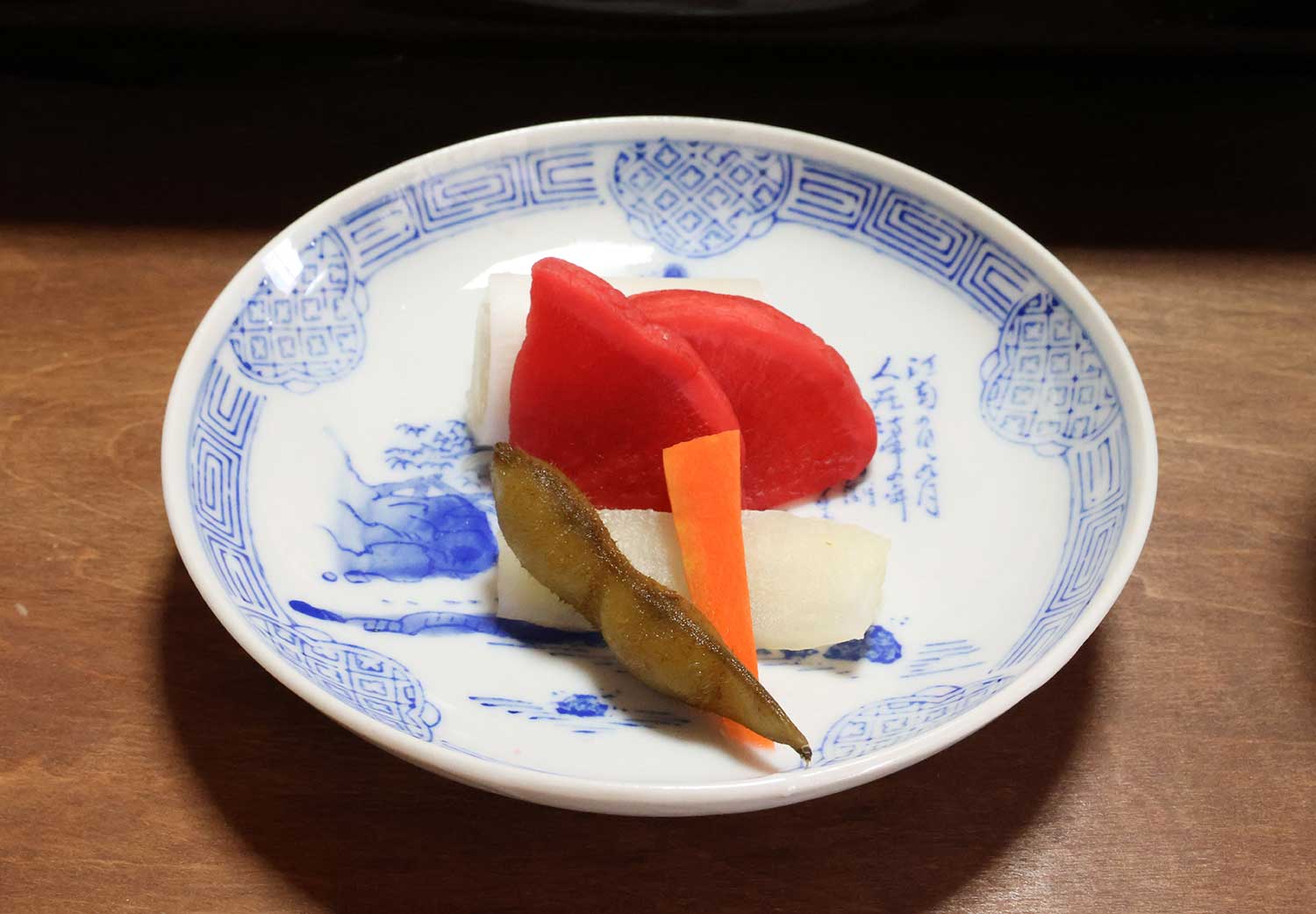
A tray of dishes can consist of more than 10 winter smaller dishes at once, some made with preserved foods, and are not only beautiful but also rich in flavor, diverse in texture, and energizing for both the mind and body. These heartfelt dishes are often praised by guests from outside the prefecture as having a “nostalgic flavor.”
The members of Tsugaru Akatsuki Association are dedicated to Tsugaru traditional cuisine. According to the book “Tsugaru Tradition Cuisine,” traditional cuisine involves “the activity of actually cooking, tasting, and eating local dishes so as to pass them down to future generations.” Its role is not only to convey the deliciousness and cooking methods of the dishes but also to share the background in which the dishes were developed, including geographical and climatic factors, customs, and methods of preservation and use of ingredients.
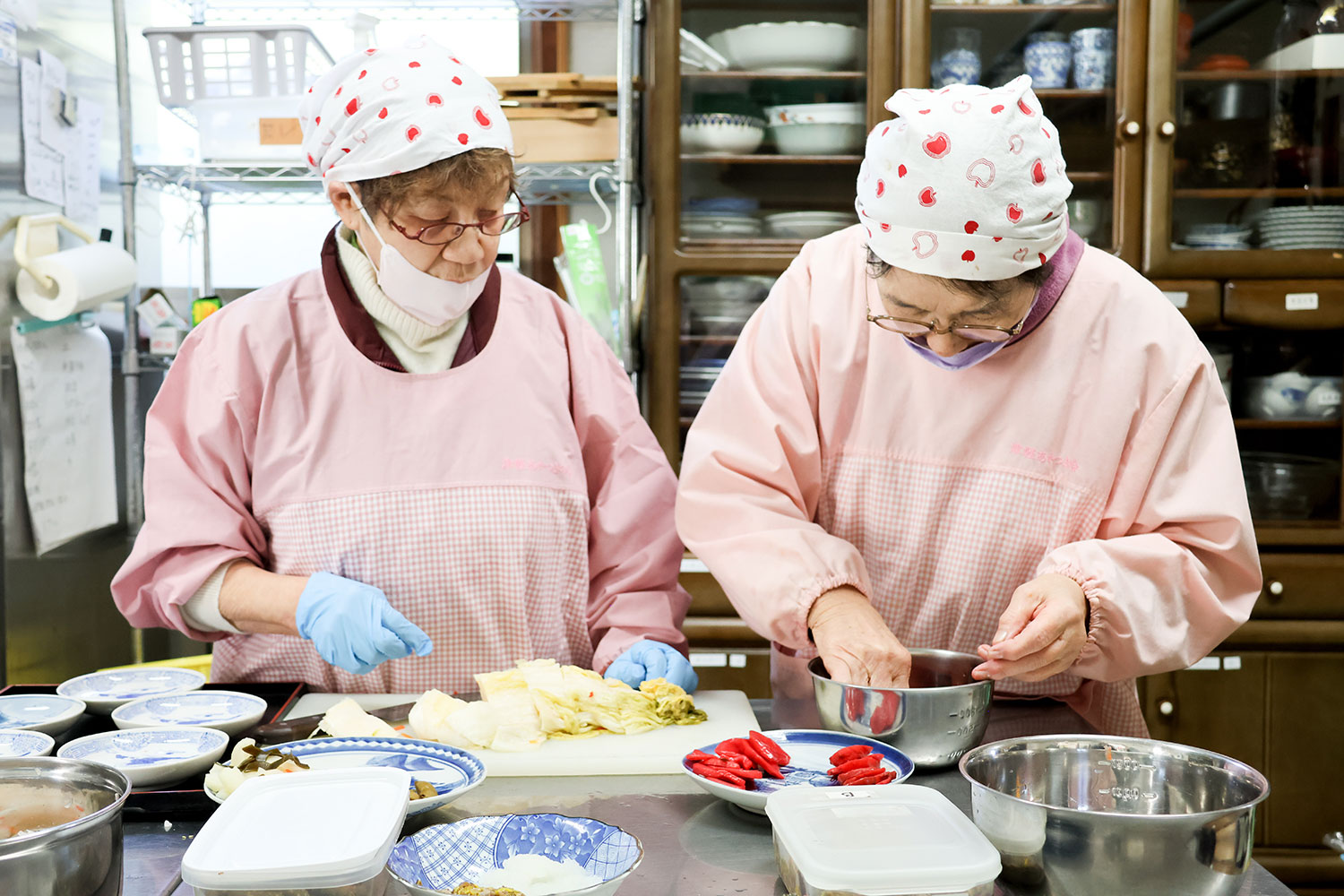
The activities at Tsugaru Akatsuki Association take place from Thursday to Sunday, where they provide lunch daily and have days dedicated to making preserved foods such as miso and Japanese pickles. Additionally, participants join in events to sell bento boxes, side dishes, and offer cooking classes. The members, who are a voluntary group interested in learning and sharing local cuisine, do not rely on these activities for their livelihood. Many of those who participate on weekdays are retired individuals with extensive work experience.
Vice Chairperson Ms. Hisako NAKATA mentions: “We don’t force anyone to join; whoever can come on the day gathers together. It’s an informal and friendly atmosphere without any hierarchy. The chairperson often says, ‘You can’t make something delicious without smiling.’ We are involved with a sense of responsibility, thinking that if we don’t preserve Tsugaru traditional cuisine, who will?”
Another vice chairperson, Ms. Chieko MORIYAMA, can sometimes be seen smiling and cheerfully encouraging the eight members cooking in the kitchen, saying, “Let’s learn together, everyone.” The members discuss flavors with each other, share cooking methods, and occasionally joke around while cooking earnestly and joyfully. Vice Chairperson MORIYAMA has a passion for preserving and sharing these dishes with a smile on her face.
Tsugaru traditional cuisine
Tsugaru Akatsuki Association
https://tsugaruakatsuki.wixsite.com/tsugaru-akatsuki

